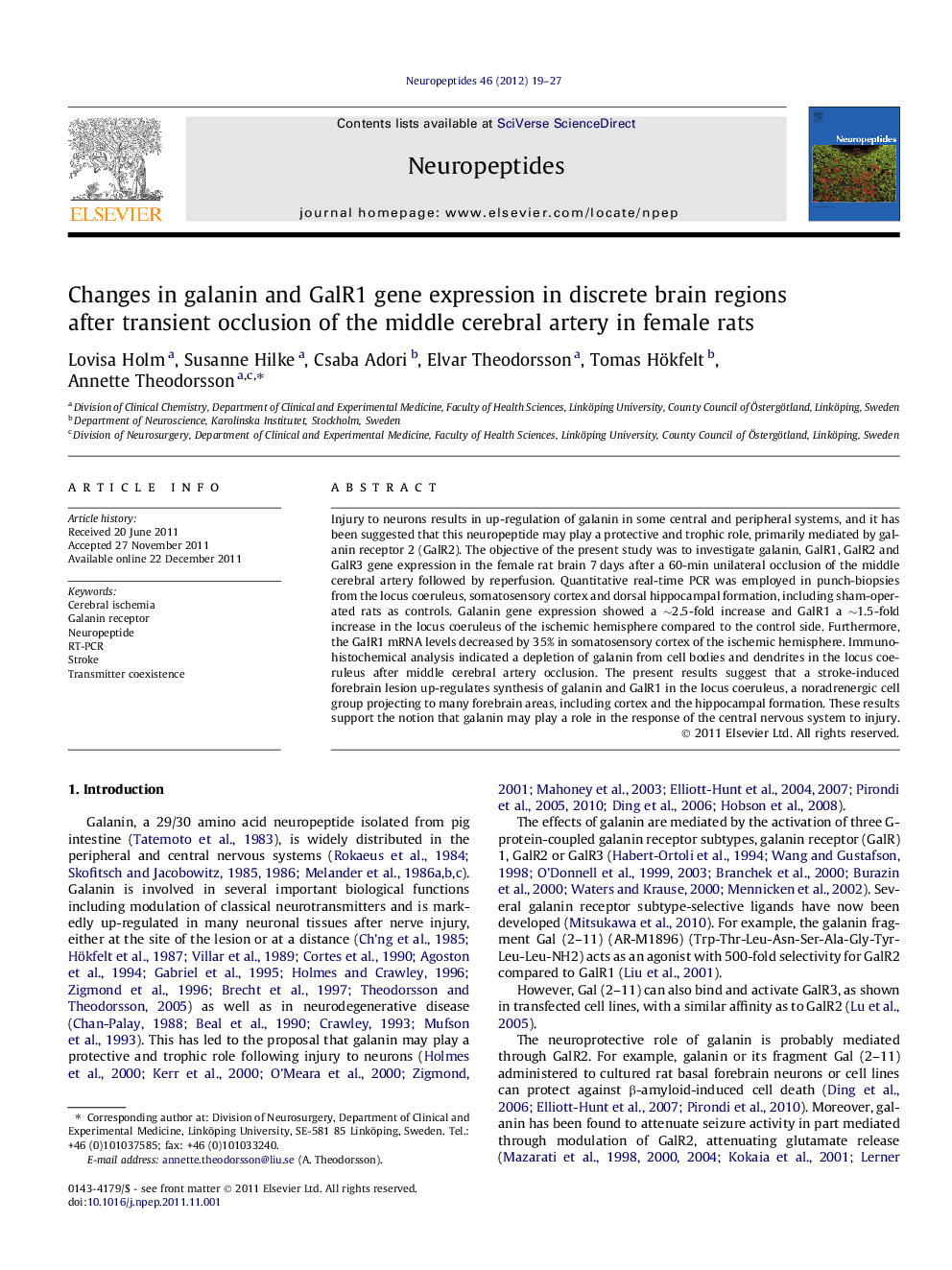| Article ID | Journal | Published Year | Pages | File Type |
|---|---|---|---|---|
| 2808298 | Neuropeptides | 2012 | 9 Pages |
Injury to neurons results in up-regulation of galanin in some central and peripheral systems, and it has been suggested that this neuropeptide may play a protective and trophic role, primarily mediated by galanin receptor 2 (GalR2). The objective of the present study was to investigate galanin, GalR1, GalR2 and GalR3 gene expression in the female rat brain 7 days after a 60-min unilateral occlusion of the middle cerebral artery followed by reperfusion. Quantitative real-time PCR was employed in punch-biopsies from the locus coeruleus, somatosensory cortex and dorsal hippocampal formation, including sham-operated rats as controls. Galanin gene expression showed a ∼2.5-fold increase and GalR1 a ∼1.5-fold increase in the locus coeruleus of the ischemic hemisphere compared to the control side. Furthermore, the GalR1 mRNA levels decreased by 35% in somatosensory cortex of the ischemic hemisphere. Immunohistochemical analysis indicated a depletion of galanin from cell bodies and dendrites in the locus coeruleus after middle cerebral artery occlusion. The present results suggest that a stroke-induced forebrain lesion up-regulates synthesis of galanin and GalR1 in the locus coeruleus, a noradrenergic cell group projecting to many forebrain areas, including cortex and the hippocampal formation. These results support the notion that galanin may play a role in the response of the central nervous system to injury.
